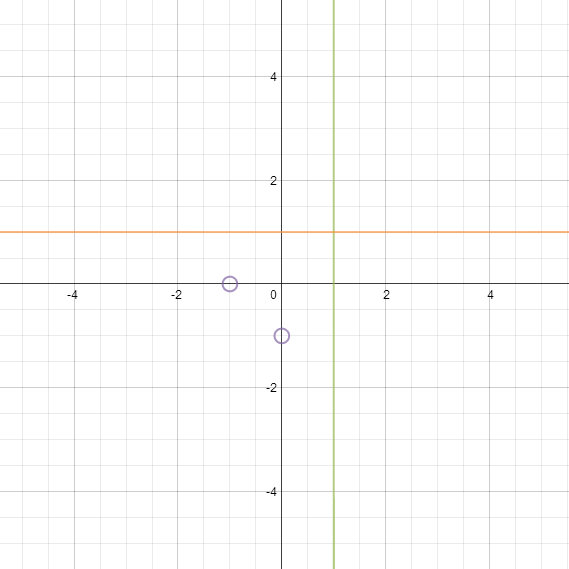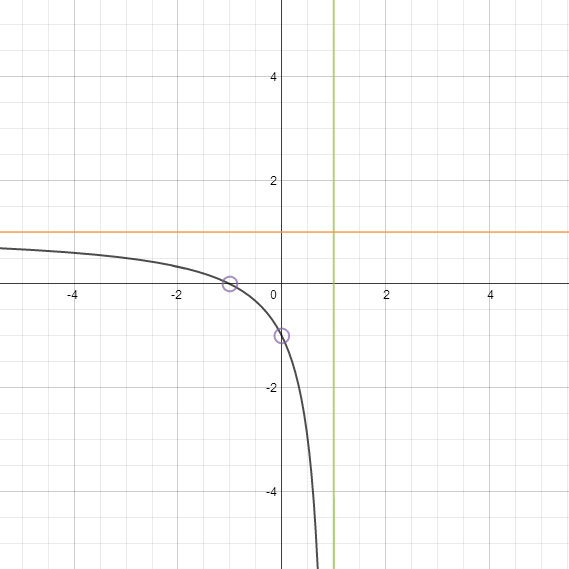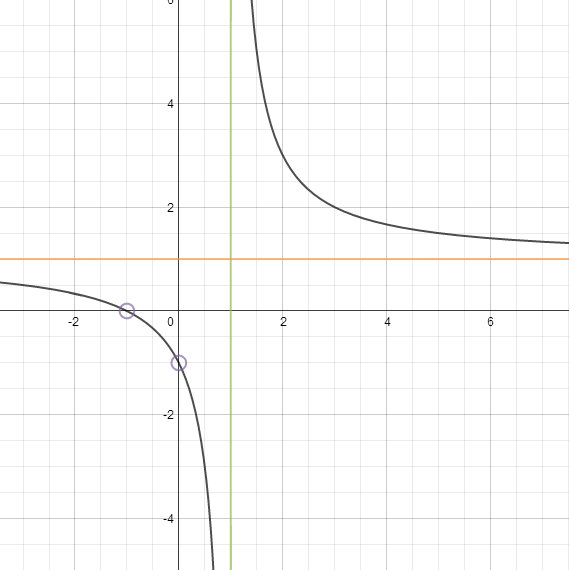Science:Math Exam Resources/Courses/MATH110/December 2010/Question 09 (f)
{{#incat:MER QGQ flag|{{#incat:MER QGH flag|{{#incat:MER QGS flag|}}}}}}
• Q1 (a) • Q1 (b) • Q1 (c) • Q2 (a) • Q2 (b) • Q2 (c) • Q3 (a) • Q3 (b) • Q3 (c) • Q4 (a) • Q4 (b) • Q5 (a) • Q5 (b) • Q5 (c) • Q6 (a) • Q6 (b) • Q6 (c) • Q7 • Q8 (a) • Q8 (b) • Q9 (a) • Q9 (b) • Q9 (c) • Q9 (d) • Q9 (e) • Q9 (f) • Q10 •
Question 09 (f) |
|---|
|
Let . Sketch the graph of . |
|
Make sure you understand the problem fully: What is the question asking you to do? Are there specific conditions or constraints that you should take note of? How will you know if your answer is correct from your work only? Can you rephrase the question in your own words in a way that makes sense to you? |
|
If you are stuck, check the hint below. Consider it for a while. Does it give you a new idea on how to approach the problem? If so, try it! |
Hint |
|---|
|
Try sketching the asymptotes and intercepts first. Where should the function go to fit these conditions? |
|
Checking a solution serves two purposes: helping you if, after having used the hint, you still are stuck on the problem; or if you have solved the problem and would like to check your work.
|
Solution |
|---|
|
First we draw the asymptotes and x- and y-intercepts. Using parts (b) and (c) of the question, we know there are two asymptotes: x = 1 and y = 1, and two intercepts: (0, -1) and (-1, 0). From this picture, it is pretty clear to know where the left half of the function should go - it must pass through the two intercepts, is decreasing, and goes towards the horizontal and vertical asymptotes. The right half of the function is a little trickier, but not by much. It must either go in the upper-right or lower-right quadrant formed by the two asymptotes. However, in the lower quadrant, the function would have to be increasing. Thus it must be in the upper right quadrant, decreasing from infinity and going towards 1. |
{{#incat:MER CT flag||
}}





